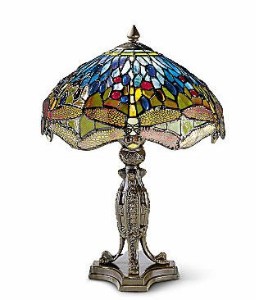How to Spot a Fake? By Reyne Haines
January 6th, 2010 by admin Fake…a word no collector or dealer ever wants to hear. Fakes run rampant in the antiques and collectibles industry. Many people think fakes are only for expensive items such as Monet paintings, diamond jewelry, and Rolex watches. Not so!
Fake…a word no collector or dealer ever wants to hear. Fakes run rampant in the antiques and collectibles industry. Many people think fakes are only for expensive items such as Monet paintings, diamond jewelry, and Rolex watches. Not so!
During the beanie baby craze, counterfeit Beanies took the market by surprise. Who would have thought a new plush animal would be reproduced?
There is no easy way to answer the question, “How do I know if an item is a fake?” If there were a few quick, simple answers, fakes would not exist.
Some fakes are of poor quality and easy to spot, others are of such good quality they have fooled museums and major auction houses alike.
So how do you keep from being taken? If you are a beginning collector, make sure to buy from dealers you know and trust until you become familiar with the different types of fakes being made. Always make sure you receive a written guarantee stating the item is authentic, and that the dealer will refund your money should you ever learn otherwise.
Depending on what type of item you collect, there is often information uploaded to the Internet that gives great detail about reproductions as they begin showing up on the market. Some of the reference books have a section describing the differences between the original vs. the new items.
Look closely at the item you are interested in. Does it appear to be quality work? Was there great attention to detail used in the decoration? Does it measure the correct size as an authentic one? These are the types of questions you should ask yourself as you examine potential acquisitions.
One of the first things I notice inexperienced collectors doing when looking at merchandise is checking the signature of an item first. Truly, this should be the final thing you look at. The signature is the easiest part of an item to fake. You should be able to recognize an artist’s work because of the item itself, and not because who signed it.
Not only are fake signatures placed on fake items, but signatures are also added to vintage items made by another maker. These are things you need to consider when acquiring pieces for your collection.
No matter what you collect, there will always be someone out there making things that never existed, and looking to take advantage of new and seasoned collectors with quality reproductions that the market has not been alerted to yet. Sometimes the giveaway can be the price. It’s not so low it gives itself away, but priced just fairly enough you think you are getting a great piece at a bargain price. Remember, the longer you look at it, won’t make it right. The more hands on time you can have with the type of item you collect, the lesser the chance you will be taken by a forger.
Recognized 20th Century Decorative Arts Expert and Appraiser. As seen on CBS “The Early Show” and NBC’s “The Art of Collecting”. Haines has written numerous articles and books on collecting. Her most recent pubication is “Collecting Wristwatches” for Krause Publications which comes out April 2010. Reyne is a frequent appraiser on PBS Antiques Roadshow.
